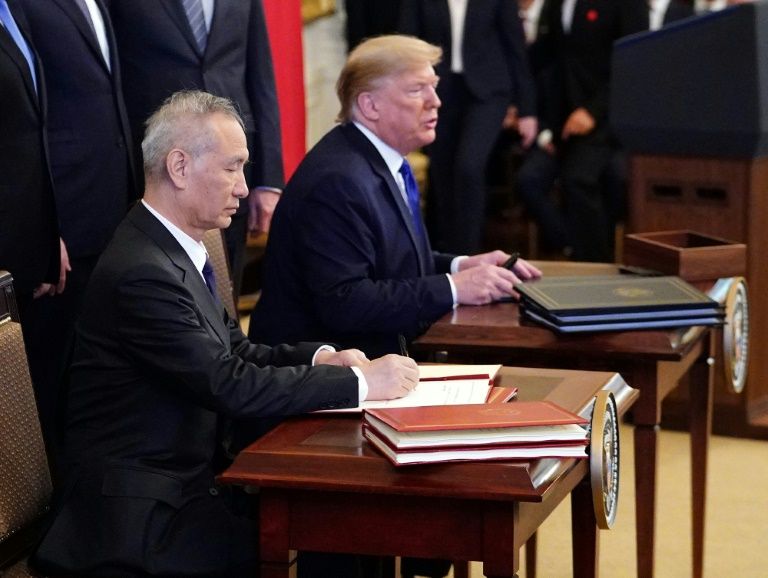HONG KONG: Asian markets rose early Thursday as details were released of the China-US trade deal signed in Washington, with analysts saying it would allow investors to turn their focus to the global outlook and earnings season. After years of painstaking on-off talks between the economic superpowers, Donald Trump finally put pen to paper on an agreement that lowers tensions between the two and provides a major boost to the global outlook.
Equities have been rallying since last month’s announcement of a deal to de-escalate a long-running stand-off that has jolted growth around the world and fanned fears of recession in some countries. The pact — the first part of a wider agreement — includes pledges from Beijing to boost purchases of US agricultural goods and other exports for two years, protects US technology and provides enforcement mechanisms allowing Washington to impose penalties that Beijing cannot respond to.
In return, the US has cut tariffs on some Chinese products and cancelled others that had been lined up, though levies remain in place on goods worth hundreds of billions of dollars, which Trump said will stay in place until the next phase of talks is complete. The president hailed it as a “momentous step”, while Beijing cautiously welcomed the “hard-fought agreement” but warned of uncertainties ahead owing to the countries’ fraught relationship.
Still, Wall Street ended with healthy gains, with the Dow and S&P 500 hitting new records, and Asia followed suit. Hong Kong added 0.5 per cent and Tokyo finished the morning session 0.1 per cent higher, while Sydney rose 0.6 per cent. Shanghai was flat. Singapore put on 0.3 per cent, Seoul edged 0.2 per cent higher and Wellington jumped 0.5 per cent, though there were small losses in Taipei, Manila and Jakarta.
“Given the amount of speculation by the markets and commentary by officials ahead of Wednesday’s signing, it is unsurprising markets have not rallied too strongly upon final signing,” JPMorgan Asset Management strategist Hannah Anderson said.
“In the US, investors largely seem to have accepted this pause in escalation and gotten back to focusing on fundamentals, like what the ongoing earnings season tells us about the outlook for the US equity market. Asia investors are likely to take the same approach.”
But she added that while the agreement was a big positive, “we should all be aware that headlines about trade, particularly US-China trade, are going to be a constant feature of 2020”.
There was also a concern that with the deal already priced into markets, there were few catalysts to drive stocks higher, while “phase two” negotiations — expected to be the toughest — are unlikely to start in earnest until after November’s US presidential elections.
“Market expectations for a phase two deal are negligible,” said AxiTrader’s Stephen Innes. “The main benefit of the deal is that the US and China frictions are unlikely to worsen in the coming months, so we have reached a peak tariff of sorts, and this will allow traders to return focus on other things.”
The easing of China-US tensions provided a broadly positive mood on trading floors that benefited higher-yielding, riskier currencies. The Chinese yuan extended recent gains by 0.1 per cent while the Indonesian rupiah and Australian dollar were up 0.3 per cent each.
The safe-haven yen dipped against the dollar and gold was flat. Hopes for a pick-up in demand as the global economy improves also helped oil prices rise, with both main contracts posting healthy gains, though signs of increasing US inventories kept the commodity anchored. AFP







